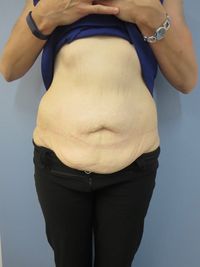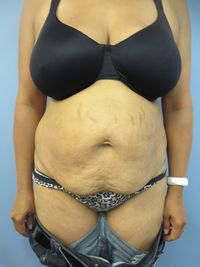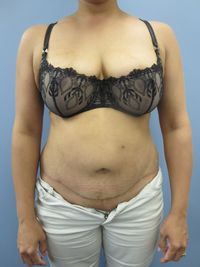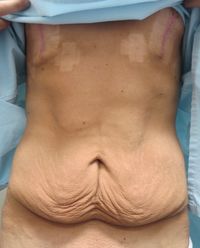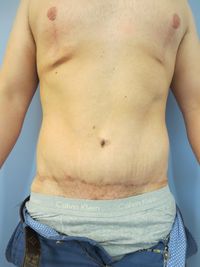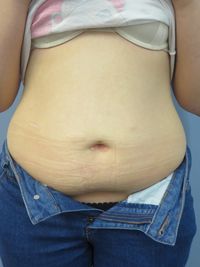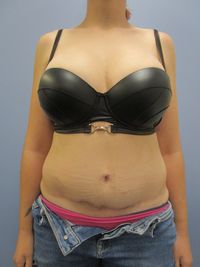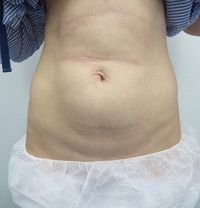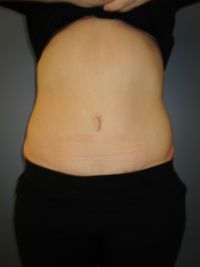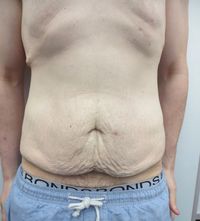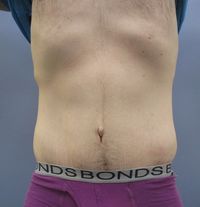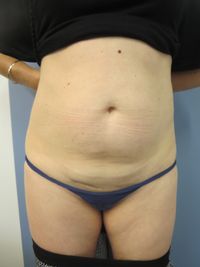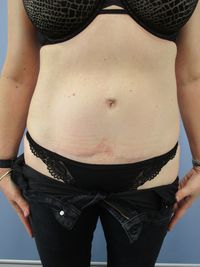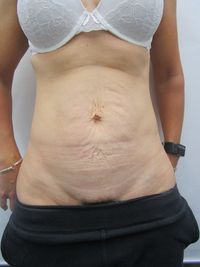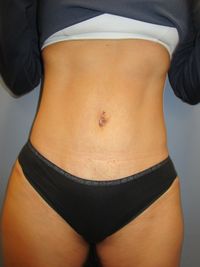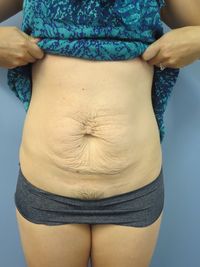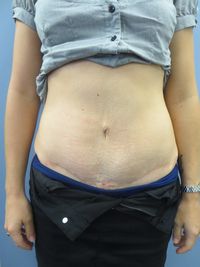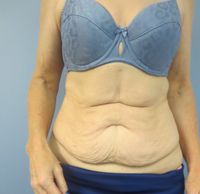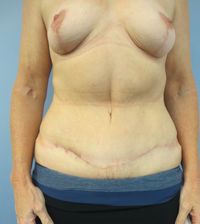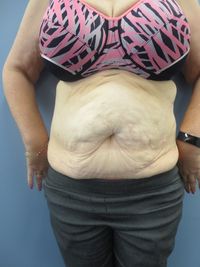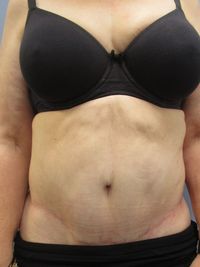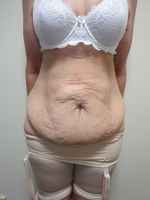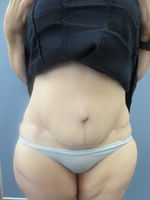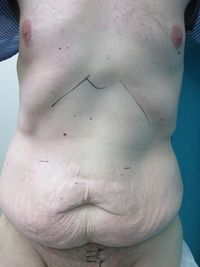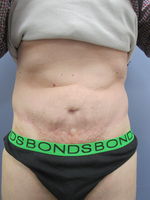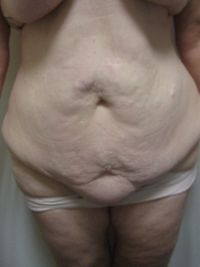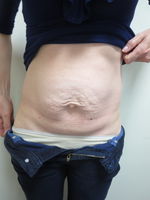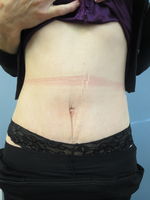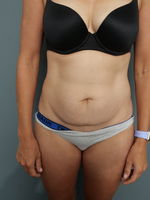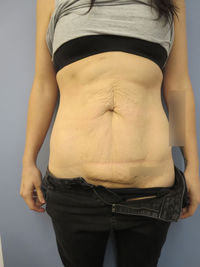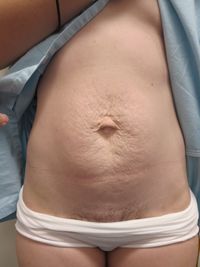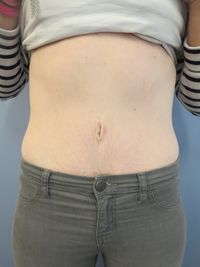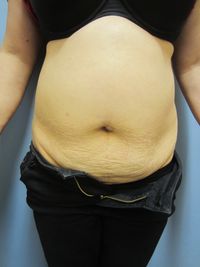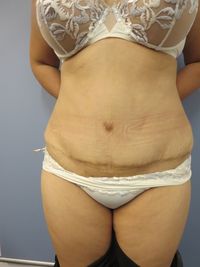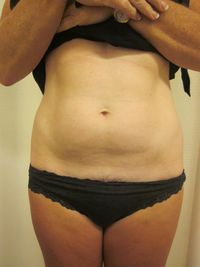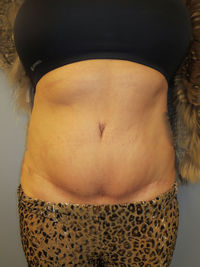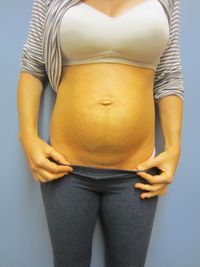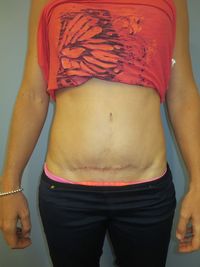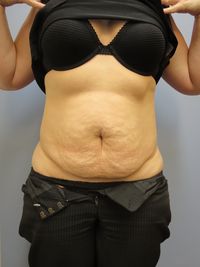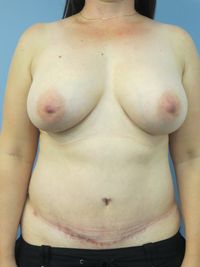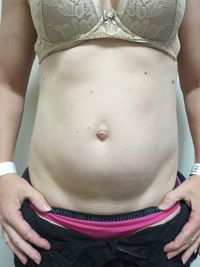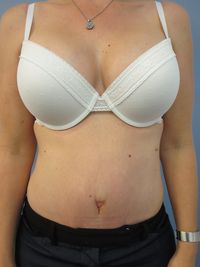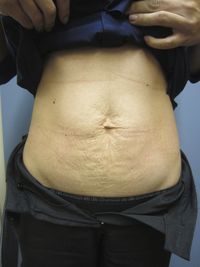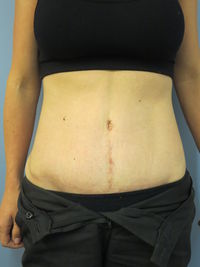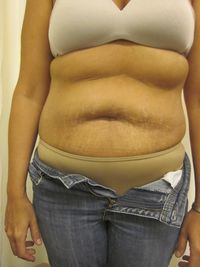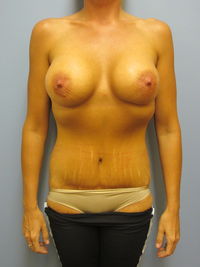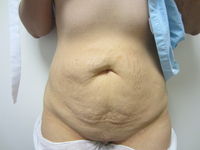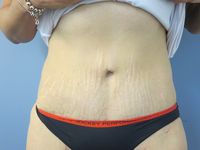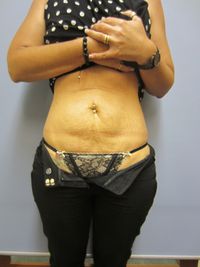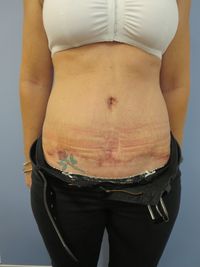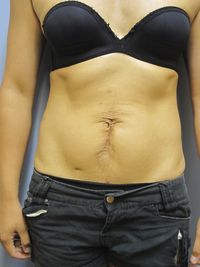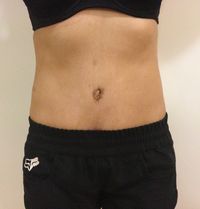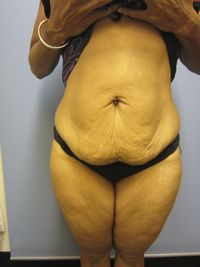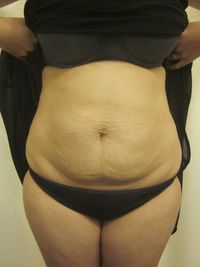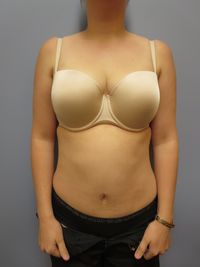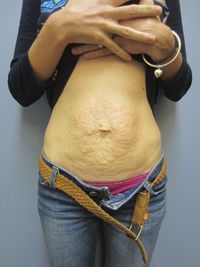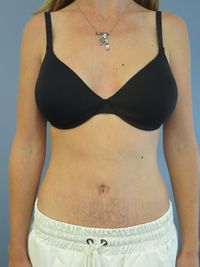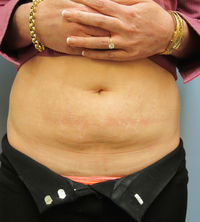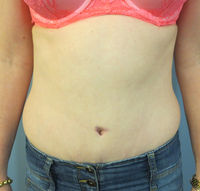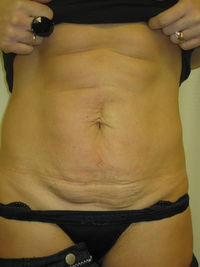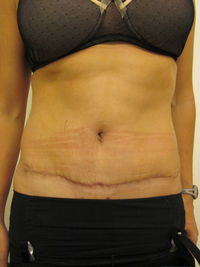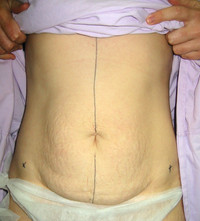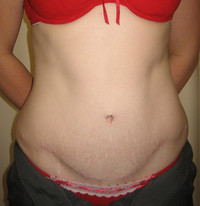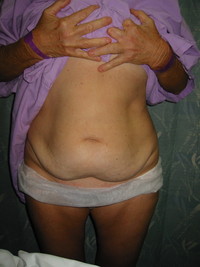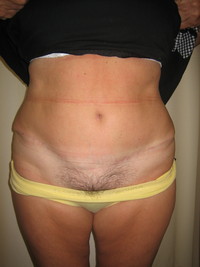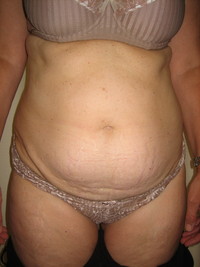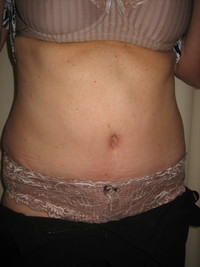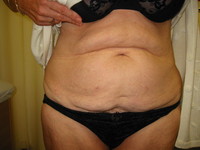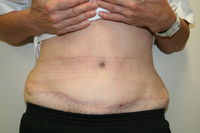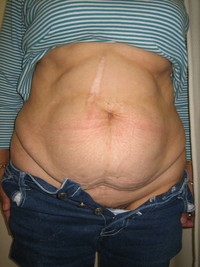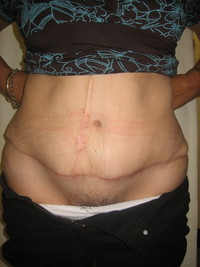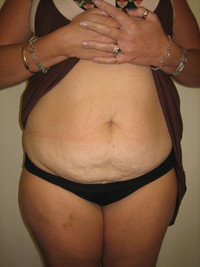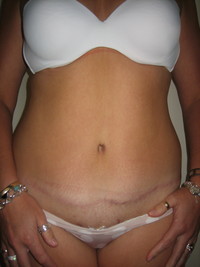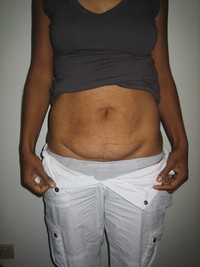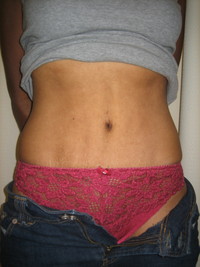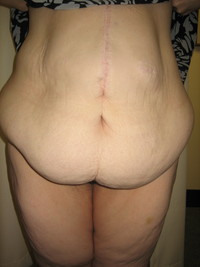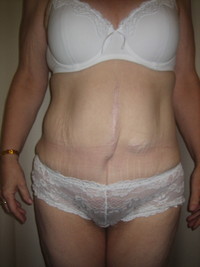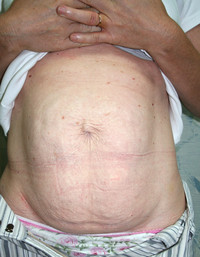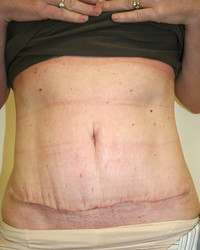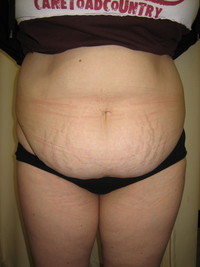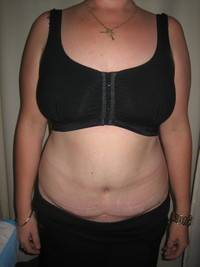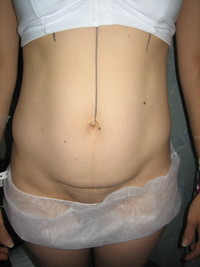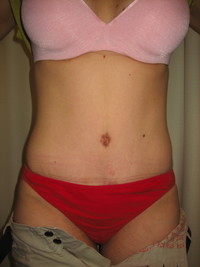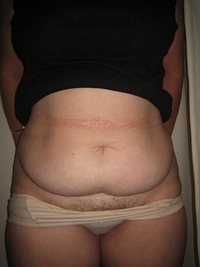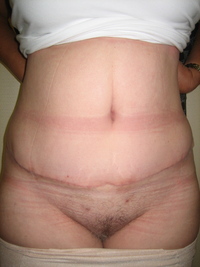The Procedure
A classic abdominioplasty is also known as a radical abdominioplasty.
An abdominoplasty (or tummy tuck) is the removal of any excess skin and fat from the lower abdomen as well as repairing the muscle separation of the anterior abdominal wall. These may be causing problems with the skin - including infection and dermatitis. This may be associated with people who have lost a large amount of weight or women who have had previous pregnancies.
Any separation of the rectus abdominis muscles can be retightened and corrected. This will result in improved abdominal tone which may be resistant to usual toning techniques. This would also improve the weakness as well as enhancing the appearance of the muscles of the abdominal wall.
Repairing the separation of the rectus abdominis muscles will also lead to an increase in core strength. Many patients also feel that back pain may be improved. Furthermore, some stress and urge incontinence of urine may be reduced by having this muscle repair performed. Abdominoplasty also helps to create a more “normal” appearance to the abdomen by removing the excess apron of skin and fat.
Any abdominal hernia or bulges that are present will also be repaired at the time of surgery. The operation may involve removal of the skin and adipose (fat) tissue that is excessive. Classically the skin and fat are removed. The umbilicus is islanded and left in place and then the skin is mobilised around it to create a new hole for relocation of the umbilicus. A new umbilical position may be relocated into an aesthetically ideal position.
All patients have the procedure performed as an inpatient and remain in hospital for two to five days. Most patients are discharged home without drains which are removed during their inpatient stay.
Goals of abdominoplasty (tummy tuck)
- To create a more normal appearance of the abdomen.
- Repair any abdominal herniae that may be present.
- Removal of the apron of excess skin and fat.
- Improvement in abdominal muscle tone and shape.
- Revision of any existing scars.
The operation may involve approaching only the skin if this is the only element that is excessive. It may progress to performing excision of skin, fat as well as mobilisation of the umbilicus. Usually an incision is made in the lower half of the abdomen and abdominal skin is removed between this incision all the way up to the umbilicus. The skin above this is then undermined allowing it to be pulled down to meet lower incision. A new umbilical position will be relocated in an aesthetically sensitive manner. Before the skin is closed the underlying muscles are surgically tightened with stitches. Drains are then placed and the skin is stitched together using dissolvable stitches.
From 1st January 2016 Medicare has imposed restrictions on the use of the item number for Abdominoplasty (including the mini and vertical abdominoplasty). In order to qualify under the new Medicare guidelines it is important that patients fulfil the following criteria:
- There is intertrigo (severe rashes and skin ulceration) or another skin condition that risks loss of skin integrity and has failed three months of conventional (non-surgical) treatment
- The excess skin interferes with the activities of daily living
- The weight loss is equivalent to a loss of 5 BMI (body mass index) point which has been stable for at least six months
There are alternative options including a mini abdominoplasty and a vertical abdominoplasty.

-
View all case studies
-
View all case studies
-
View all case studies
-
View all case studies
-
View all case studies
-
View all case studies
-
View all case studies
-
View all case studies
-
View all case studies
-
View all case studies
-
View all case studies
-
View all case studies
-
View all case studies
-
View all case studies
-
View all case studies
-
View all case studies
-
View all case studies
-
View all case studies
-
View all case studies
-
View all case studies
-
View all case studies
-
View all case studies
-
View all case studies
-
View all case studies
-
View all case studies
-
View all case studies
-
View all case studies
-
View all case studies
-
View all case studies
-
View all case studies
-
View all case studies
-
View all case studies
-
View all case studies
-
View all case studies
-
View all case studies
-
View all case studies
-
View all case studies
-
View all case studies
-
View all case studies
-
View all case studies
-
View all case studies
-
View all case studies
-
View all case studies
-
View all case studies
-
View all case studies



